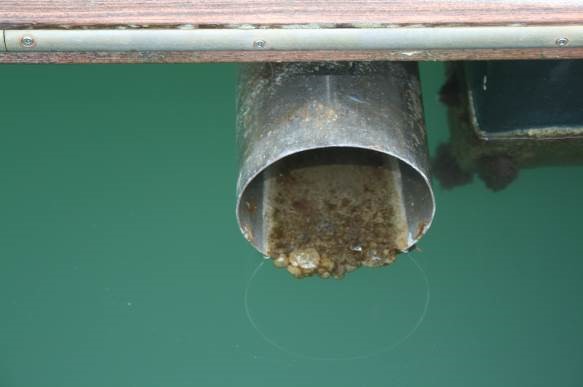Reactive treatment of biofouling in vessel pipework

Biofouling can accumulate rapidly on any area of a vessel that is exposed to seawater. Although the external hull of a vessel is usually treated with coatings to reduce the rate of development of biofouling, internal spaces such as pipework and water intakes may be less protected and can be overlooked during routine inspections and maintenance. More than 600 recreational vessels arrive in New Zealand from overseas each year, some of which will carry biofouling with them in their internal pipework.
The Ministry for Primary Industries contracted researchers from the Cawthron Institute, NIWA and Biofouling Solutions Ltd to investigate practical solutions for treating biofouling in the pipework systems of recreational vessels. The project team initially reviewed a range of alternative solutions. The review concluded that heat treatment provided the best solution because:
- It rapidly killed even the hardiest biofouling organisms
- It had little or no effect on other organisms upon discharge to the marine environment
- It can be implemented using currently available technologies
Following development of a prototype heat treatment system and laboratory testing in mock pipework systems, the research team is now moving to the field testing stage which will examine the efficacy of heat treatment on real vessels.
Additional Reading
- Cahill P., Tait L., Floerl O., Bates T., Growcott A. & E. Georgiades (2018). A portable thermal system for reactive treatment of biofouled internal pipework on recreational vessels. Marine Pollution Bulletin. 139:65-73.
- Cahill P., Hickey C., Lewis P., Tait L. & O. Floerl (2019). Treatment agents for biofouling in internal pipework of recreational vessels A review of pipework configurations, biofouling risk, and operational considerations. MPI Technical Paper No: 2019/03. 68 p. [PDF 1.6 MB]
- Cahill P., Tait L., O. Floerl (2019). Tales from the CRYPT: A prototype heat treatment system for biofouling in internal pipework of recreational vessels. MPI Technical Paper No: 2019/04. 89 p. [PDF 2.5 MB]
Related Content
- Growcott A., Kluza D. & E. Georgiades (2016). Literature review: In-water systems to remove or treat biofouling in vessel sea chests and internal pipework. MPI Technical Paper No: 2016-16. 66p. [PDF 617 KB]
Key Contacts
| Patrick Cahill | Leigh Tait | Eugene Georgiades |
| Principal Investigator | Principal Investigator | Technical Liaison |
| Cawthron | NIWA | Ministry for Primary Industries |
| [email protected] | [email protected] | [email protected] |